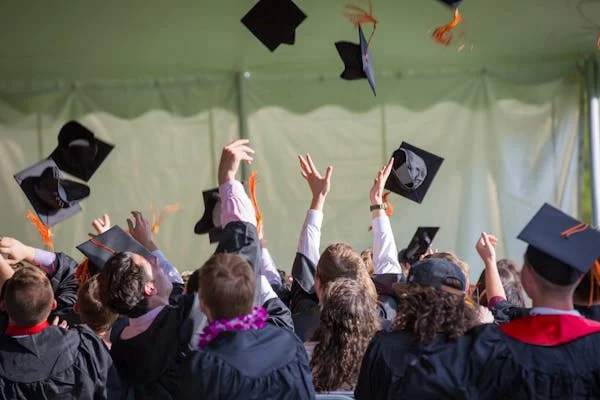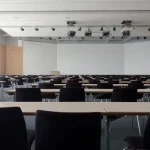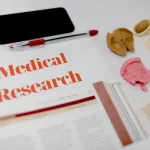Introduction
What is the Problem with Formal Education has been the foundation of societal progress for centuries. However, in recent years, many have raised concerns about the effectiveness and relevance of the traditional educational system. Below, we delve deeper into the primary issues with What is the Problem with Formal Education and explore potential solutions.
Rigid Curriculum Structure
Traditional education systems often follow a fixed, standardized curriculum. This rigid structure limits students’ ability to explore subjects that interest them. A lack of flexibility in teaching methods and subjects can prevent students from developing creativity, critical thinking, and a love for learning.
Key Issues:
- Limited subject choices
- Lack of personalized learning
- Stifled creativity and exploration
The lack of flexibility can make students feel boxed in, as they are not encouraged to pursue their individual passions or interests. A more dynamic and adaptable curriculum could help students develop a broader skill set, rather than just focusing on core subjects.
Standardized Testing
Standardized testing is a significant component of formal education. While it serves as a measure of academic performance, it often focuses too much on memorization and rote learning rather than real-world application. This can lead to stress and frustration among students who are not able to express their full potential through these tests.
Key Problems:
- Focus on memorization
- Stressful for students
- Narrow measure of intelligence
Many students struggle with standardized tests, not because they lack knowledge but because they may not test well under pressure. This type of testing fails to account for the diverse talents and skills that students possess, making it an inadequate measure of their overall capabilities.
Limited Practical Application
Many formal education programs prioritize theoretical knowledge over practical experience. This creates a disconnect between what students learn in the classroom and what they need to succeed in the workforce. Graduates often find themselves unprepared for the challenges they face in their careers.
Challenges Faced:
- Lack of hands-on training
- Theoretical knowledge over practical skills
- Difficulty transitioning to the workplace
Students may excel in theory but struggle with real-world application. For instance, while a student might understand the principles of economics, they may not know how to balance a budget or manage finances in a real-life scenario. Incorporating more practical learning opportunities can help bridge this gap.
One-Size-Fits-All Approach
Education systems tend to adopt a one-size-fits-all approach, assuming that all students learn in the same way. In reality, students have different learning styles, speeds, and interests. This approach can lead to disengagement and failure for many students who do not fit the traditional learning mold.
Concerns with This Approach:
- Lack of personalized learning
- Some students fall behind
- One method for all
Every student has a unique learning style—some may learn better through visual aids, while others might prefer hands-on activities or auditory explanations. By customizing the learning experience, students can thrive in a way that suits their individual needs.
Resource Constraints
Educational institutions often face constraints in resources, such as outdated textbooks, insufficient technology, and overcrowded classrooms. These limitations can impede the delivery of high-quality education and hinder teachers’ ability to implement innovative teaching techniques.
Key Resource Issues:
- Outdated materials
- Overcrowded classrooms
- Insufficient funding for new technologies
A lack of resources can directly affect the quality of education a student receives. In schools with limited funding, students may have to use outdated textbooks or tools, which do not provide an optimal learning experience. Addressing this issue is crucial for improving education standards.
Pressure and Mental Health
Students face significant pressure to perform academically, often at the cost of their mental health. The focus on grades, exams, and competition can result in stress, anxiety, and even depression. Addressing mental well-being is crucial for ensuring students’ overall success and happiness.
Mental Health Problems:
- High stress levels
- Anxiety due to academic pressure
- Risk of burnout
Increased academic pressure can cause students to feel overwhelmed. A system that prioritizes mental health alongside academic achievement would enable students to succeed without compromising their well-being. Schools could provide counseling services or stress-management programs to support students.
Lack of Life Skills Education
Traditional education systems focus heavily on academic subjects but neglect teaching practical life skills. Skills such as budgeting, communication, problem-solving, and emotional intelligence are often not included in the curriculum. This oversight leaves students ill-prepared for adult life.
Missing Life Skills:
- Financial literacy
- Emotional intelligence
- Conflict resolution skills
While academic subjects are important, students also need to learn how to navigate the challenges of daily life. Teaching life skills will equip students with the knowledge to handle finances, manage relationships, and make responsible decisions—skills they will use for the rest of their lives.
Inequitable Access to Education
Not all students have equal access to quality education. Socioeconomic factors, geographic location, and other disparities often prevent many children from receiving a proper education. This inequality perpetuates social and economic divides and limits opportunities for some students.
Inequality Issues:
- Limited access in rural areas
- Disparities in educational quality
- Socioeconomic barriers
Students from lower-income families or rural areas may have limited access to educational resources or extracurricular opportunities. This inequality creates gaps in learning, making it harder for some students to succeed. To address this, more resources need to be directed toward underserved communities.
Potential Solutions for Reform
To address these issues, various reforms are being proposed. Below is a table summarizing some of these potential solutions:
|
Problem |
Proposed Solution |
Expected Outcome |
|
Rigid Curriculum |
Introduce flexible and elective-based systems |
More personalized and engaging learning experiences |
|
Standardized Testing |
Move towards assessments that test real-world skills |
Better measure of practical knowledge and abilities |
|
Limited Practical Application |
Increase internship and hands-on learning opportunities |
Better career readiness and practical expertise |
|
One-Size-Fits-All Approach |
Implement adaptive learning technologies and personalized teaching methods |
Enhanced learning for all types of students |
|
Resource Constraints |
Invest in better resources, updated technology, and teacher training |
Improved learning environments and better outcomes |
|
Mental Health |
Integrate mental health programs and support systems |
Reduced stress and improved overall well-being |
|
Life Skills Education |
Include life skills courses in the curriculum |
Better-prepared students for adult life and work |
|
Inequitable Access |
Provide more scholarships and funding for underserved areas |
Increased access and reduced educational disparity |
Conclusion
What is the Problem with Formal Education is facing numerous challenges that limit its effectiveness and ability to fully prepare students for the future. While these issues are significant, they are not insurmountable. By implementing reforms such as flexible curricula, practical learning, and mental health support, we can build a more inclusive, effective, and relevant education system. A shift towards these solutions can lead to an What is the Problem with Formal Education that better serves the needs of all students, providing them with the tools and skills necessary to succeed in life.





